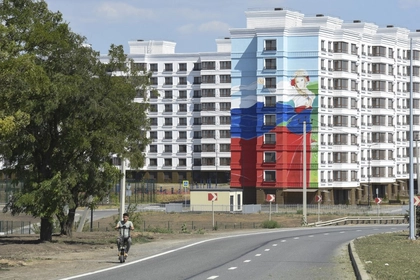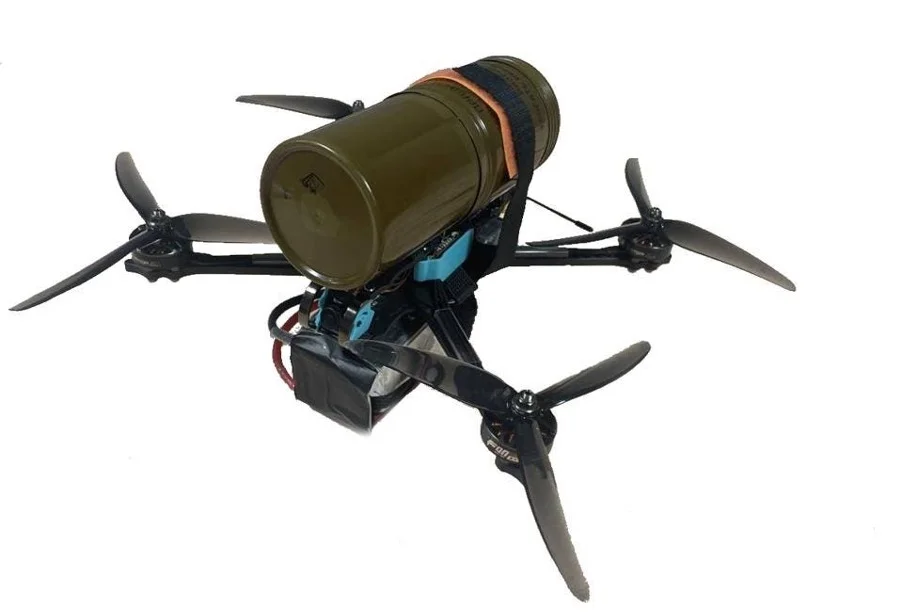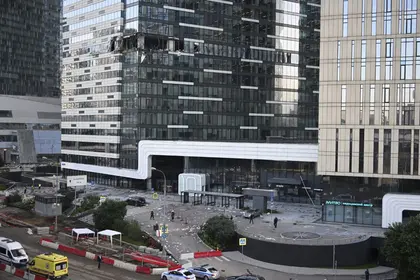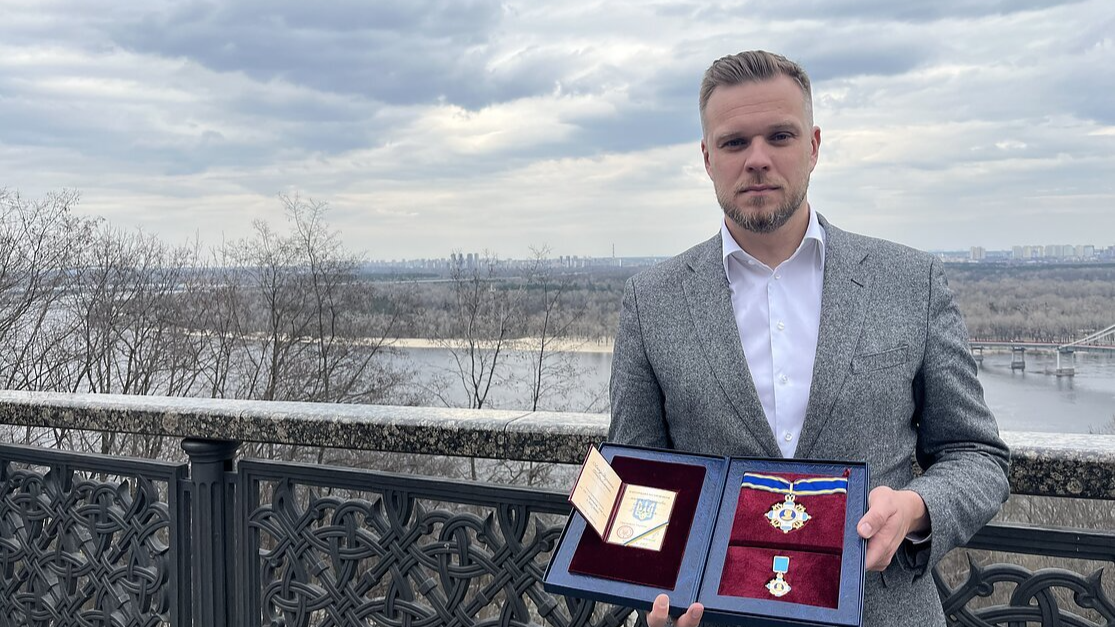In the last 48 hours, Ukraine has apparently conducted a “War of the Drones” on Moscow and other locations in Russia, as well as on occupied Crimea – simply because it now can through increased weapons supply and technological innovation.
The increased drone strikes come as Ukraine is likely becoming the largest manufacturer of unmanned aerial vehicles (UAVs) – and their naval equivalents – in the world, including the potentially crowd-funded “Bober” drones that probably hit a government ministry building in Russia’s capital.
- Look at the latest Ukraine news that was released today.
- Look at the most up-to-date Ukraine news that came out today.
JOIN US ON TELEGRAM
Follow our coverage of the war on the @Kyivpost_official.
“Such a level of production of lethal, ground and floating drones as in Ukraine is not found in any country in the world,” said Oleksandr Kamyshin, the Ukrainian Minister responsible for growing military production.
➡️ Ukraine currently has the highest level of UAV production in the world, Kamyshin
— Lew Anno Suport#Israel #Ukraine 24/2-22 (@anno1540) July 29, 2023
According to him, currently more than 40 companies are involved in the supply, more than 100 companies produce drones.
🔊 "In this regard, Ukraine will definitely become a Mecca for people who… pic.twitter.com/PTkNYY4XTP
Experts believe this is all part of an unprecedented push by the government, the private sector and even civil society to radically increase the war-torn country’s military capability and self-reliance.
Crowd-funded Drones
Yesterday, Serhiy Prytula, the founder of one of Ukraine’s main projects for military and humanitarian fundraising, posted photos and video of himself with Ukrainian-made “Bober” (Beaver) drones that apparently are of the type sighted over Moscow and have a range of some 1,000 kilometers.
Москвичі!
— Serhiy Prytula (@serhiyprytula) July 30, 2023
Здригайтесь від сирен.
Ходіть в бомбосховища.
Спостерігайте за тим, як прилітає у стратегічні обʼєкти.
Не спіть від роботи ППО.
Ходіть на похорони близьких.
А паралельно не втомлюйтесь шукати відповідь на запитання: «За что?!».@sternenko pic.twitter.com/JqFBh7VSff
“Muscovites! Shudder from the sirens. Go to bomb shelters. Watch as it flies into strategic objects. Do not sleep from the work of air defense. Go to the funerals of loved ones. And at the same time, don't get tired of looking for an answer to the question: For what?!” Prytula, a popular television personality, Tweeted.

Moscow Imposes Russian Car Insurance in Occupied Ukraine by 2025
From primarily Ukrainian citizens, Prytula’s foundation raised $5.5 million to buy 50 Bobers for the Armed Forces of Ukraine (AFU) at around $108,000 each.
CNN journalists were yesterday allowed to visit a testing site for Ukrainian-invented and manufactured naval drones. The drones have been funded and created as an initiative of United24, President Volodymyr Zelensky’s fundraising platform. Ukraine aims to assemble a fleet of 100 such vessels, some of which were used to recently damage the Kerch Bridge to occupied Crimea.
Self-Reliance
Indeed, Kyiv is racing to build up its own military production so it won’t have to depend on foreign charity.
"We are building Ukraine's strength as a weapons manufacturer,” Oleksandr Kamyshin, the Minister for Strategic Industries of Ukraine, said in an interview earlier this month.
Kamyshin did not provide specific figures on the production capacity of the Ukrainian defense industry, which are secret, but noted that it had doubled over the past month.
He added that Ukraine produced more mortar and artillery shells last month than it made in all of 2022.
Kamyshin, who is 39 years old and sports a Kozak braid, was previously the very highly regarded leader of Ukrazaliznytsia (UZ), Ukraine’s monopoly railway system. He is credited for remarkably keeping the country’s transport system going during the period of Russia’s full-scale invasion.
Transformation
His aim is to remake Ukraine’s Soviet-style defense industry – known for decades for corruption and inefficiency – into an engine of the war effort – even as fighting rages around manufacturing plants.
Effectively, through Kamyshin, Defense Minister Oleksii Reznikov, and Minister for Digital Transformation Mykhailo Federov, the Ukrainian government is pitching foreign producers to come to wartime Ukraine, where costs are low, where production facilities are being rebuilt within months, where they can use daily battlefield experience to test and upgrade their weapons, and where the government will clear obstacles.
In one example, in three months since its establishment in late April, a Ukrainian Government portal and management hub – the Brave1 platform – for military technology innovation has coordinated, vetted and listed some 300 projects. The platform is aimed at foreign companies in particular.
Such confidence building moves and improved systems appear to be bearing early results with more private investment in Ukrainian military manufacturing.
Forbes, for example, recently reported a new company manufacturing kamikaze FPV (first person view) racing drones for Ukraine “emerging from stealth mode.”
Success
One Way Aerospace’s Scalpel attack drones have proved themselves in action, including in targeting and destroying Russian tanks, and now production is being ramped up.

“We are establishing a larger factory to scale to several thousand units monthly in Ukraine with the assistance of local authorities,” one of the company’s principals told Forbes.
While the US-supplied Javelin guided anti-tank missiles cost almost $200,000 a shot, the basic Scalpel costs around $1,000.
The contracts with One Way Aerospace appear to be part of Ukraine’s $860m Army of Drones initiative which aims to equip sixty new drone assault companies with large numbers of loitering munitions, the majority of which will be Ukrainian-built.
Also, two of Europe’s biggest arms manufacturers – Germany’s Rheinmetall AG, and BAE Systems Plc of the UK – have confirmed they’re in talks to establish production in Ukraine, while Rheinmetall has taken a 51 percent stake in a joint venture to repair and maintain tanks.
Turkey’s Baykar Tech said in October it was forging ahead with plans to build a factory to make its Bayraktar TB-2 drones in Ukraine, where its engines were already made. In December, the company said it had tested a new jet powered version of the drone that would again be powered by Zaporizhzhia-based Motor Sich PJSC.
The Result
In its daily intelligence assessment on Monday, the British Ministry of Defense said Ukraine’s drone attacks combined with a number of other current factors “highlight the Russian state’s failure to insulate the population from the war.”
Latest Defence Intelligence update on the situation in Ukraine - 31 July 2023.
— Ministry of Defence 🇬🇧 (@DefenceHQ) July 31, 2023
Find out more about Defence Intelligence's use of language: https://t.co/JwzC8RArTO
🇺🇦 #StandWithUkraine 🇺🇦 pic.twitter.com/UrTZTL8hzn
You can also highlight the text and press Ctrl + Enter









